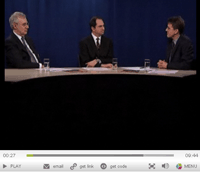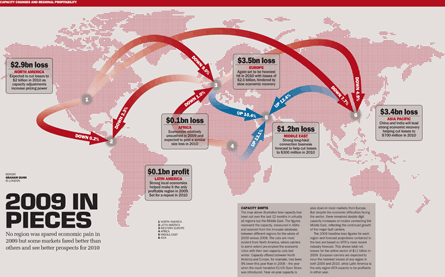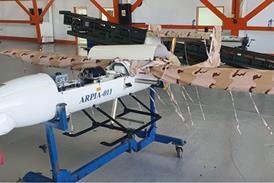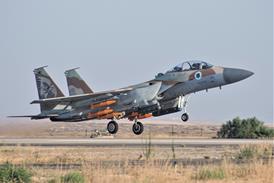It says much for the scope of the crisis to engulf the airlines that an industry-wide net loss forecast of $5.6 billion for 2010 marks a significant improvement on the last two years. While the industry has spent much of the last decade in the red, after racking up collective losses of $28 billion over the last two years, including $11 billion for 2009, it does at least indicate the worst may be over.
But the scars of the last two years, together with the uneven course of the global economic recovery and continuing concerns within the industry, means a cautious outlook abounds.
"2009 very quickly got much worse than we were expecting," says IATA chief economist Brian Pearce. IATA's forecast for a 2009 loss of $2.5 billion at this stage last year was swiftly overtaken as the depth of the economic crisis emerged. But while the association has already added $2 billion to its 2010 loss forecast since its September view, it hopes there will be no repeat this year. "It looks as though some of the risks we were facing this time last year we are not facing this year," says Pearce, before noting that what risks there are lie on the downside. Pearce identifies two principle concerns: fuel and yields. "We do expect there to be some improvement but because of the weakness in yields and the increase in fuel prices, we do not expect more than a halving in losses," he says.
| |
|---|
IATA director general Giovanni Bisignani notes 2010 bears a similarity to 2007, with fuel prices estimated passenger traffic of 2.3 billion roughly at the same level. But IATA expects revenues to rise 5% and reach $478 billion in 2010, crucially around $30 billion shy of the 2007 picture.
This reflects the different yield position. Traffic has been picking up and the sharp year-on-year declines have been replaced by relatively small negatives, though they remain well below 2007 levels. Progress on recovering yields is further behind. "We still have a very long way to go before we get back to positive territory there," says Pearce. "They are still 10-15% below levels of last year. We are passed the low point, but it is a very slow improvement."
So while IATA projects passenger traffic up 4.5% in 2010 and air cargo 7%, it sees only fractional improvement in air cargo yields and no improvement on the passenger side.
"The issue is going to be how long will traffic volumes go up before you see prices going up," notes Chris Tarry, analyst with CTAIRA, adding: "At the moment there is no real upward pressure."
Tarry gives a one word answer to the main challenge for airlines in 2010: capacity. Pearce concurs that managing capacity next year will be key in not stifling the early signs of improving yields and profitability. "Capacity and its potential impact on yields is still, I think, the biggest risk in 2010, mainly because of the very low utilisation of the existing fleet, as well as new capacity being delivered," he says. He notes the global fleet has grown in 2009 and aircraft utilisation was around 6% lower this year than in 2008. Lower utilisation rates increase unit costs, in part contributing to why stronger traffic has not necessarily translated into improved profitability.
At least the economic picture looks more positive for 2010, if a little patchy. Global economic projections for 2010 are for a return to growth. The World Bank in its 2009 Global Outlook summary forecasts 2% growth in world GDP for 2010, followed by 3.2% for 2011, while the United Nations' World Economic Situation and Prospects 2010 report estimates world gross product will grow 2.4% for the 12 months ahead. But it describes the recovery as "uneven" and says conditions for sustained growth "remain fragile".
It sees economic growth strongest in developing nations next year; China and India are forecast to grow 8.8% and 6.5% respectively. By contrast the Organisation of Economic Co-operation and Development expects growth in most of its economies to "fluctuate around a modest underlying rate for some time to come", held back by the need for businesses, financial institutions, households and governments to repair their balance sheets. The handling of consumer and national debts remain key to the shape of the recovery.
| THE AIRLINE BUSINESS DEBATE |
|---|
 |
| ACE Aviation Holdings chairman Robert Milton and industry expert Chris Tarry join Airline Business editor Mark Pilling for a special debate on the depth of the crisis facing the airline industry and the challenges ahead for 2010. Watch it here. |
Pearce adds: "It's a highly cyclical industry. Certainly markets for airline services are highly geared to the economic cycle, so 2.5% GDP growth should mean 4-5% growth in air travel, which is good. But airline fortunes will also depend on how much capacity is chasing that demand and that is where the big risk lies. We could get growth in passenger numbers but it could well be a profitless growth because of low yields and rising fuel prices.
"A lot of the air freight business has been in Asia, so for a lot of airlines in the air cargo business, there is better news there because Asia will be driving this business," he adds. "Much of the passenger business is still largely in Europe, America and across the Atlantic and that is likely to remain weak. That's going to mean for passenger airlines its going to be a very difficult environment unless they can get exposure to growing markets like Asia and Latin America."
Air Cargo Given Year End Lift But Concerns Remain
Airlines around the world are breathing a sigh of relief that there was something like a normal air cargo peak season towards the end of 2009, but there remain profound doubts about the durability of the recovery, writes Peter Conway.
The consensus is that while there was a return to air freight as manufacturers and exporters responded to perceived green shoots in the global economy, 2010 could see demand stagnate again, as high unemployment and a tightening of government spending start to kick in.
Rupert Hogg, director of cargo for Cathay Pacific, points to a number of short-term factors that helped air cargo in the peak season, including the fact that factories in China had sent workers home and so were not able to respond to the revival of demand quickly enough to use sea freight."But looking forward, we see nothing robust enough to make us bring back any of the freighters we have parked in the desert," he says.
Asia was definitely the engine of the recovery, though European carriers such as Cargolux reported a gratifying rise in Europe to Asia traffic as well, and Latin America was a bright spot for some.
However, no one is claiming that air freight is back where it was pre-crisis. As Bob Dahl, managing director of consultants Air Cargo Management Group, puts it, "flat is the new up", meaning that carriers are happy just to be holding their ground.
 |
|---|
He reckons cargo traffic was 15% down in 2009 after a 5% fall in 2008. IATA is a bit more optimistic, saying traffic has recovered about half of the ground it had lost in the crisis. All agree cargo has in effect lost several years worth of growth.
That has implications for capacity. IATA says that 12% of cargo capacity was lost in 2009, but widebody freighter capacity was down 22%. Carriers report that load factors have rebounded and yields improved in recent months, suggesting that capacity and demand are now more in balance.
But Dahl still reckons that the 1,550 freighters still in service are maybe a hundred more than the market needs. With some 15-20 new widebodies due for delivery in 2010 - mainly 777Fs, with a few 747-8Fs and A330Fs, that suggests more freighters might have to be parked, and that those already in the desert could be there for some time yet.
Births, Deaths And Plenty Of Marriages
Despite projections of a bloodbath, especially after the glut of airline collapses in autumn 2008, the number of airline failures in 2009 has been relatively limited by comparison - in the region of 30 so far this year. While the demand crisis certainly took its toll on airline profitability this year, a relenting in record high fuel prices and the gradual easing in liquidity markets no doubt helped many to make it through to the key summer season.
Central European budget carrier SkyEurope, which finally ended a long-battle to stay afloat in the summer, was probably the highest profile casualty during the year. Indeed Europe saw the highest number of airline failures during 2009.
IATA chief economist Brian Pearce notes that many larger carriers have been able to improve their cash position by going to the markets, but that small and mid-sized carriers have been unable to access capital markets as the banks are still not lending. This means they remain financially vulnerable in the present seasonally weak market conditions. "The big airlines have got a cash cushion, but many of the smaller and mid-sized airlines haven't," he says. "This might not be a problem for airlines in robustly growing markets like Asia, but it may well be a problem for airlines in markets with a relatively weak economic recovery and low yields. It will keep cash under pressure particularly in the seasonally weak winter."
Many of the names lost this year stemmed from the consolidation process, such as Air One merging into Alitalia and the Clickair brand going in the merger with Vueling.
Indeed merger activity dominated much of the first half of the year, notably Lufthansa's spending spree which saw it take on Star Alliance partners Austrian Airlines, bmi and Brussels Airlines to join Swiss within the group, while later British Airways and Iberia finally reached agreement on their merger.
But as the year closed, and moving into 2010, much of the focus is on alliance pacts; American and BA hoping to finally secure approval for a transatlantic pact, while American and Delta continue their tug of war for Japan Airlines on behalf of oneworld and SkyTeam respectively.
Start-ups were in short supply during 2009, but Lufthansa was also involved in two of the most high profile new carriers; launching Milan-based Lufthansa Italia in February and the Aerologic cargo joint venture with DHL Express in June.
Source: Airline Business























